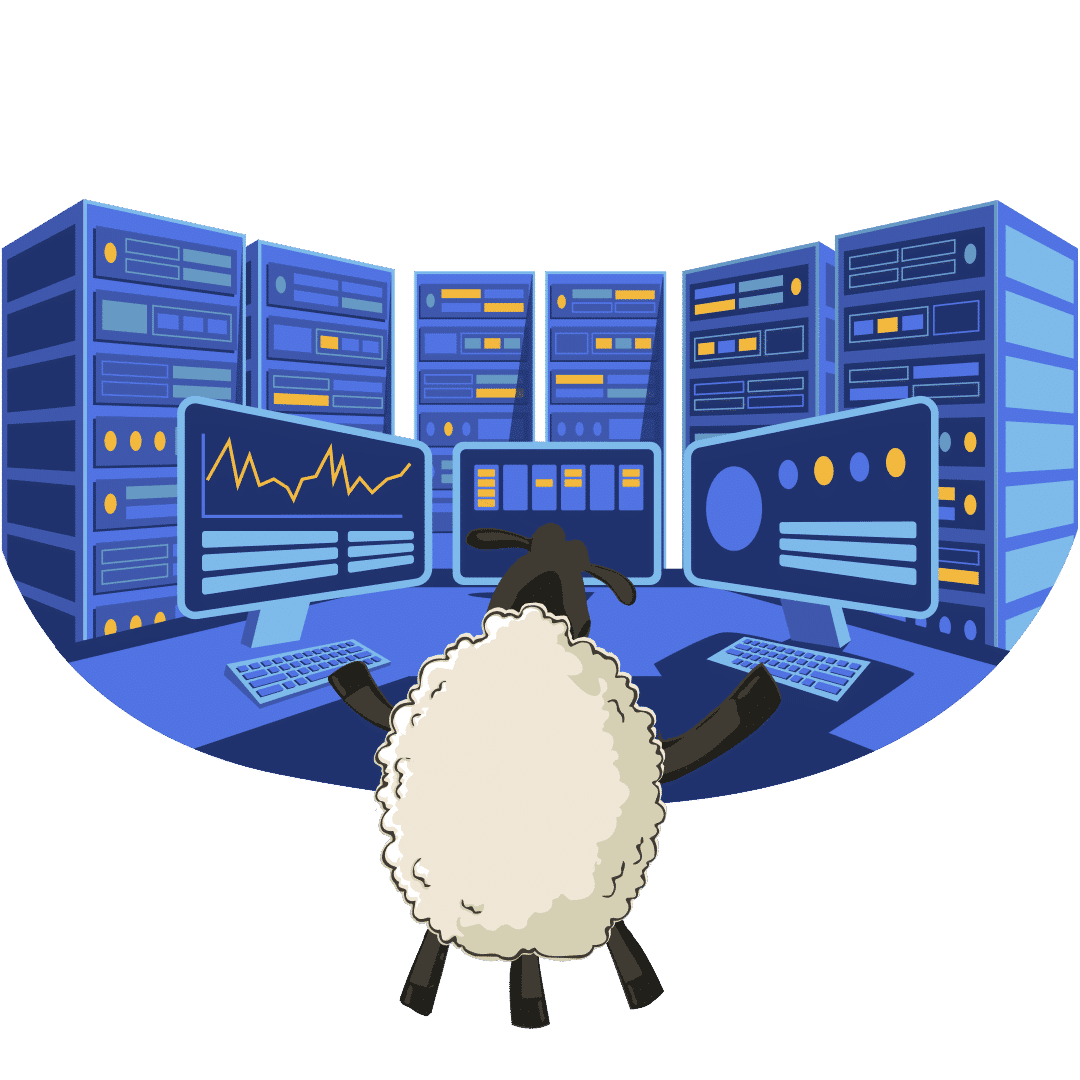Maintaining your WordPress site is essential to guarantee its optimal performance and security. As an essential platform, WordPress requires regular attention to avoid technical problems, improve the user experience and ensure good SEO. In this article, we reveal 10 essential tips for maintaining your WordPress site. Whether you’re a novice or an experienced user, these practical tips will help you keep your site in tip-top shape. From plugin updates to regular backups, each tip will help you keep your site running smoothly and prevent the unexpected. Follow us to find out how to maintain the health of your WordPress site easily and effectively!

The importance of regular maintenance
Regular maintenance of your WordPress site is a crucial task that you cannot ignore if you want your site to function optimally and remain secure. A website is a dynamic entity, requiring constant updates and adjustments to adapt to new technologies, market trends and user requirements. Without regular maintenance, even the best-designed sites can quickly become obsolete, vulnerable to attack and underperforming. Indeed, neglecting these aspects can not only affect the user experience but also have a negative impact on your site’s search engine ranking.
Regular maintenance can prevent problems before they become serious. For example, plugins that have not been updated can open security breaches, and obsolete files can slow down your site. By carrying out regular checks and updating your site’s components, you can avoid these pitfalls and ensure a smooth user experience. What’s more, proactive maintenance allows you to identify and correct bugs or errors quickly, which can improve the satisfaction of your site visitors and strengthen customer loyalty.

Another crucial aspect of regular maintenance is the continuous improvement of your site’s performance. Search engines like Google take site speed and performance into account in their ranking algorithms. By keeping your site up to date and optimising its performance, you can improve your ranking in search results, attracting more organic traffic. In short, regular maintenance is not just a technical necessity, but also an effective strategy for ensuring the longevity and success of your WordPress site.
Backups: the essential first step
Regular backups of your WordPress site are essential to guarantee the security and continuity of your online presence. Imagine losing all your data, articles, images and configurations due to a technical problem or malicious attack. Such a situation could be catastrophic for your company or your project. That’s why the first step in any effective maintenance strategy is to set up a reliable and regular backup system.
There are many backup plugins available for WordPress, such as UpdraftPlus, BackWPup and VaultPress, which can automate the process and give you peace of mind. These tools allow you to schedule automatic backups at regular intervals, store backups on external platforms such as Google Drive, Dropbox or even remote servers. In the event of a problem, you can restore your site from the last available backup, minimising data loss and downtime.
It is also important to regularly check the integrity of your backups. A corrupt or incomplete backup will be of no use in the event of a problem. Periodically test your back-ups to ensure that they are complete and functional. In addition, it is advisable to keep several versions of back-ups so that you can go back to an earlier version of your site if necessary. In short, regular, reliable back-ups are essential protection against unforeseen events and potential disasters.
WordPress updates, themes and plugins
Regular updates to WordPress, your themes and plugins are essential to maintain the security, performance and compatibility of your site. WordPress developers regularly release updates to fix bugs, improve functionality and enhance security. Ignoring these updates can leave your site vulnerable to attacks and technical problems.
Updating WordPress is a relatively simple process, accessible directly from your site’s dashboard. However, it is crucial to always back up your site before making a major update to avoid any risk of data loss. What’s more, certain updates can sometimes cause conflicts with existing plugins or themes. It is therefore advisable to test updates on a test site before applying them to your production site.
Theme and plugin updates are just as important. A theme or plugin that has not been updated can become a potential security vulnerability. What’s more, updates often bring performance improvements and new features that can enrich the user experience on your site. Make sure you regularly check the updates available for your themes and plugins, and apply them as soon as possible to keep your site secure and performing well.
Database optimisation
Database optimisation is a crucial step in improving the performance of your WordPress site. Over time, your site’s database can accumulate unnecessary data, such as article revisions, spammy comments or expired transients. This unnecessary data can slow down your site and increase page load times, which can negatively affect your site’s user experience and SEO.
Tools such as WP-Optimize or WP-Sweep can help you clean and optimise your database in just a few clicks. These plugins analyse your database and remove unnecessary data, reducing the size of your database and improving server response times. In addition to automatic optimisation, it is also advisable to schedule regular optimisations to keep your database healthy.
Another important aspect of database optimisation is table defragmentation. Over time, database tables can become fragmented, which can slow down SQL queries and affect the overall performance of your site. Defragmenting tables allows data to be reorganised more efficiently, improving access speed and site performance. In short, regular optimisation of your database is essential to ensure a smooth user experience and optimum performance.
Monitoring site safety
The security of your WordPress site must be an absolute priority in order to protect your data and that of your users. Cyber attacks are becoming increasingly frequent and sophisticated, and an unsecured site can be an easy target for hackers. To ensure the security of your site, it is essential to put in place effective monitoring and protection measures.
Using security plugins such as Wordfence, Sucuri or iThemes Security can greatly improve the security of your site. These tools offer a range of features such as file monitoring, protection against brute force attacks, web application firewalls and malware detection. They also alert you to suspicious activity, enabling you to react quickly and take the necessary steps to protect your site.
In addition to security plugins, it is important to follow good security practices, such as using strong, unique passwords, disabling unused administrator accounts and restricting login attempts. Implementing two-factor authentication (2FA) can also add an extra layer of protection by requiring additional verification when logging into your site. By combining these monitoring and protection measures, you can ensure the security of your WordPress site and protect your data from potential threats.
Checking speed and performance
The speed and performance of your WordPress site are crucial factors influencing user experience and SEO. A slow site can frustrate visitors and encourage them to leave your site before even viewing your content. What’s more, search engines like Google take page load speed into account in their ranking algorithms. So it’s essential to regularly check the speed and performance of your site to ensure that it’s working optimally.
Online tools such as Google PageSpeed Insights, GTmetrix and Pingdom can help you analyse the speed of your site and identify areas that need optimisation. These tools provide detailed reports on your site’s performance, including recommendations on how to improve page load times. For example, they may suggest compressing images, minimising CSS and JavaScript files, or using browser caching to speed up page loading.

Optimising your site’s performance can also include using content delivery networks (CDNs) to distribute your site’s content across several servers around the world. This reduces latency and improves loading times for visitors located in different regions. It is also advisable to choose quality hosting with sufficient resources to support your site’s traffic. By carrying out regular speed and performance checks, you can ensure a smooth user experience and improve your site’s search engine ranking.
Managing comments and content
Managing comments and content on your WordPress site is essential to maintaining an interactive and engaging environment for your visitors. Comments allow users to express themselves, ask questions and share their opinions, which can enrich the content of your site and foster an active community. However, it is important to moderate comments to avoid spam, inappropriate messages and off-topic discussions.
Using plugins such as Akismet or Antispam Bee can make comment management much easier by automatically filtering out spam and unwanted comments. These tools use advanced algorithms to detect and block suspicious comments, allowing you to concentrate on constructive and relevant discussions. In addition, it is advisable to define clear moderation rules and communicate them to users to ensure respectful, high-quality interactions.
Content management also involves regularly updating your articles, pages and other content elements to ensure they are relevant and accurate. Out-of-date or incorrect content can damage your site’s credibility and user experience. Make sure you periodically revise your content to correct errors, add recent information and optimise the text for SEO. What’s more, regularly adding new content can attract new visitors and encourage existing users to return to your site.
Statistics and traffic analysis
Analysing the statistics and traffic on your WordPress site is a key step in understanding visitor behaviour and optimising your content strategy. By monitoring traffic data, you can identify the most popular pages, traffic sources, conversion rates and many other performance indicators. This information is essential for making informed decisions and improving the effectiveness of your site.
Google Analytics is one of the most popular and powerful tools for analysing your site’s statistics. By integrating it with your WordPress site, you can access a wealth of detailed reports on user behaviour, page views, time spent on the site, bounce rates and much more. This data allows you to understand what’s working well on your site and what needs improvement. For example, if you notice that certain pages have a high bounce rate, you can examine the content on those pages and make changes to make them more engaging.
In addition to Google Analytics, there are other analysis tools such as Jetpack, MonsterInsights and Matomo that offer similar functionality and can be easily integrated into WordPress. These tools allow you to monitor your site’s performance in real time and receive alerts in the event of significant changes in traffic or user behaviour. By regularly analysing your site’s statistics and traffic, you can adjust your content strategy, improve the user experience and increase visitor engagement.
Conclusion and best practices for effective maintenance
Maintaining your WordPress site is an ongoing task that requires regular attention and constant effort. The tips we’ve shared in this article are designed to help you keep your site in tip-top shape, guarantee its security, improve its performance and provide an optimal user experience. By following these tips, you can prevent technical problems, protect your data and ensure the longevity of your site.
To sum up, regular back-ups, updating your site components, optimising the database, monitoring security and checking performance are essential steps in effective maintenance. In addition, managing comments and content, as well as analysing statistics and traffic, will help you maintain an engaging, high-performance site. By incorporating these practices into your maintenance routine, you can ensure that your WordPress site remains secure, fast and relevant to your visitors.
However, we understand that for many SMEs, implementing these best practices can be a considerable challenge. Between the day-to-day running of your business and time constraints, it’s not always easy to maintain a rigorous maintenance routine. This is precisely whereEzohiko can help.
At Ezohiko, we specialise in helping SMEs implement and monitor these WordPress maintenance best practices. Our team of experts takes care of all the technical aspects: automated backups, secure updates, performance optimisation, security monitoring and detailed analyses. This way, you can concentrate on your core business, while rest assured that your website will remain high-performing and secure.
Our personalised approach is tailored to the specific needs of each SME. Whether you require full maintenance or one-off support, we offer flexible and affordable solutions. By choosing Ezohiko as your partner, you benefit not only from cutting-edge technical expertise, but also from proactive monitoring that anticipates problems before they affect your business.
Contact Ezohiko today to find out how we can turn your WordPress website maintenance into a strategic asset for your business. Together, let’s maximise the potential of your online presence and ensure the long-term success of your website.
